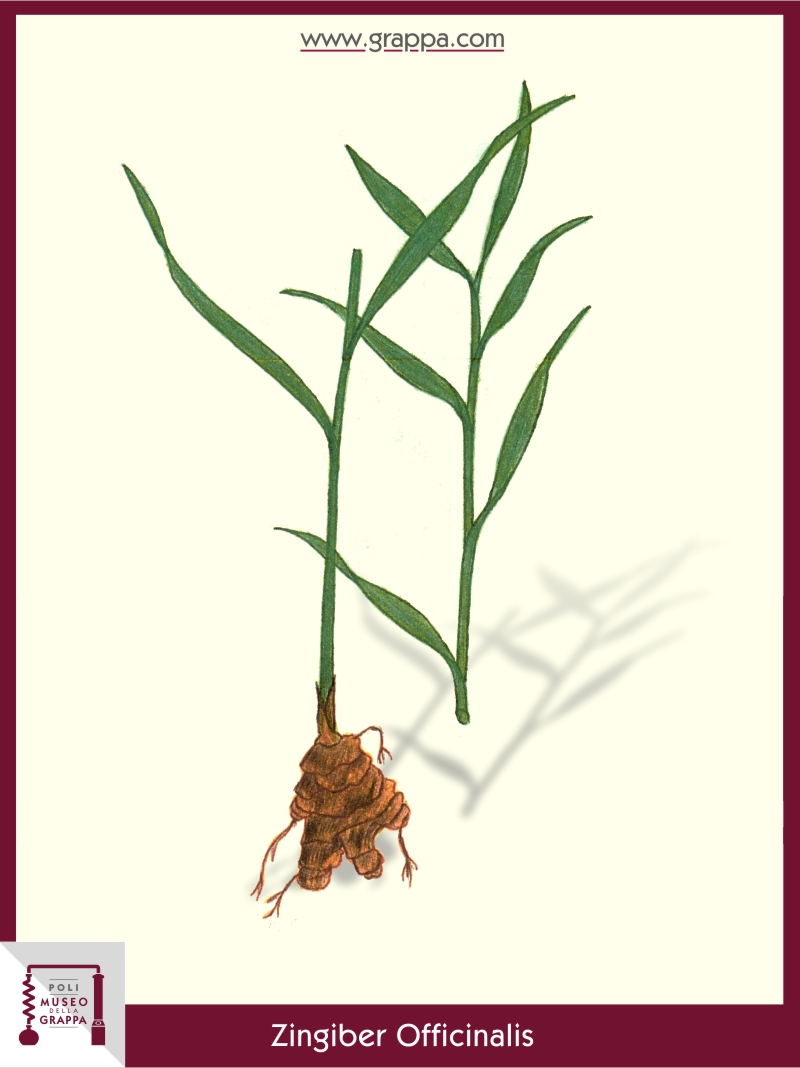Alcoholic ginger
- Plant: Ginger Root, Ginger (Zingiber Officinalis)
- Plant part: root, rhizome
- Plant feauters: digestive, aromatic, stomachic expectorant, relieving flatulence, eupeptic, corrective

-
Description:
For thousands of years the ginger root was used by the Chinese and Indians both as medicine and as condiment of food.
Furthermore the ginger was already known in antiquity and during Hellenism, where it appeared as a result of the invasion of Alexander the Great; while Pliny the Elder assumed that the ginger had arrived in Rome via the Arabs.It is certain, however, that the root was a considerable object of trade, due to its spicy and fragrant aroma, especially in the Middle Ages.
Its rhizome, now commonly known as "ginger" is used not only for the production of liqueurs, alcohol-free "bitters" or as a condiment for sauces, but also as an aromatic substance for cosmetics.
Not to forget its remarkable pharmaceutical qualities: the root relieves flatulence, it is stomachic and digestive and can be used as a corrective. For these reasons the ginger has always been cultivated in the Orient.All these medicinal but above all their aromatic properties, are very suitable for the preparation of a Grappa.
-
Note:
For bile stones and during pregnancy contraindicated. A medical prescription is necessary.
The recipe
-
Ingredients:
- 5 pieces of ginger root
- 1 liter of Grappa
- sugar
- honey -
Preparation:
Its preparation requires special care: first to flavour the first sugary substances of the Grappa, which means to macerate the root for a certain time in a sugar-honey mixture.
Five well-purified rhizomes are sufficient, which are placed in a vessel and covered with the sugar-honey syrup.
They have to stay for about a month in a sunny place, then add a liter of Grappa, and leave everything in the shadow for two months.
After the usual filtration, the Grappa is left to age for other three months: its color becomes pale yellow and its taste is penetrating, warm and strong.
Poli Distillerie and
Poli Grappa Museum
Newsletter
Subscribe our newsletter to keep up to date with our latest news.